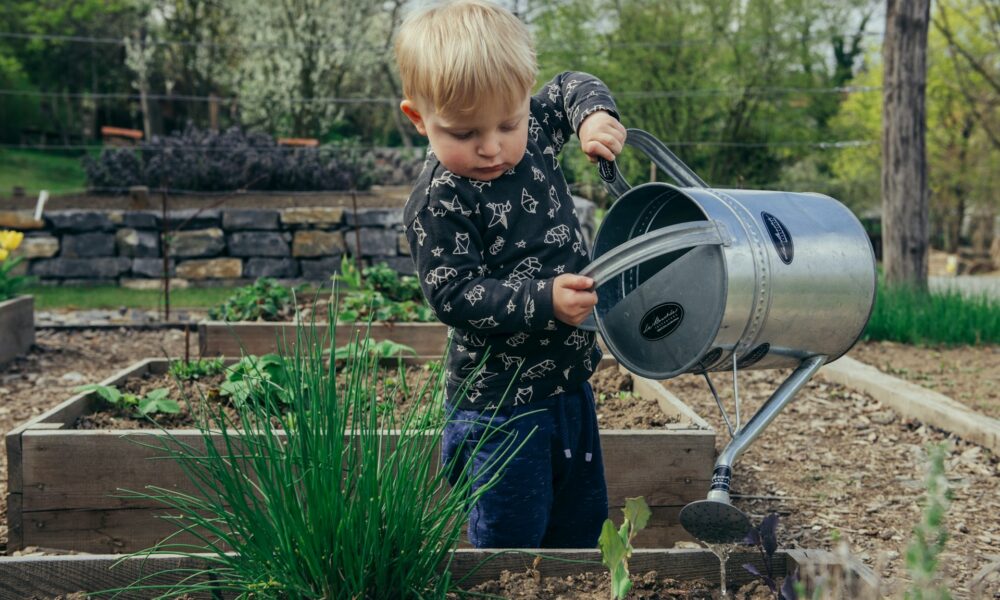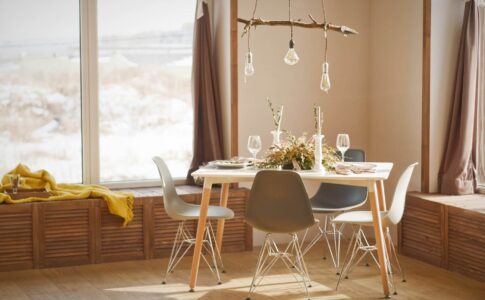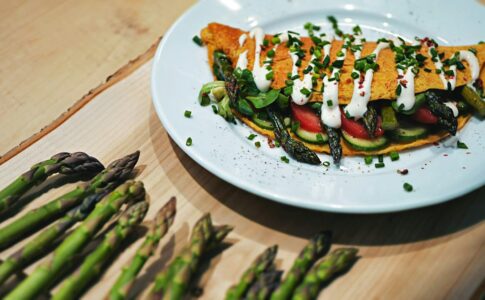When it comes to living a healthy, sustainable lifestyle, there’s a revolution happening right now – in our very kitchens.
Imagine harvesting fresh, organic produce without stepping outdoors; think of the purest greens, sweetest tomatoes, and crunchiest vegetables growing and waiting just a few steps from your stove. Welcome to indoor organic gardening, where freshness is just a planting pot away.
In this ultimate guide, we’ll explore how you can bring the taste of your homegrown success to every meal, all year round.
The Wholesome Benefits of Indoor Organic Gardening
Starting an indoor organic garden isn’t just about the convenience of culinary produce. It’s a switch to a healthier, sustainable lifestyle that resonates through every bite of your homegrown goodies.
The environmental benefits are undeniably positive: reduced carbon footprint from zero food miles and less resource-intensive farming practices. But the perks extend deeply into your personal life too.
A Bounty of Freshness, Always
Perhaps the most salient benefit is the round-the-clock access to fresh, nutrient-packed produce. Picking vegetables and herbs minutes before they hit your salad means maximum nutritional benefit for you and your loved ones.
In the journey toward achieving healthy, organic food all year round, ensuring that your food sources comply with required standards is paramount.
Engaging with a reputable regulatory compliance company can streamline this process, ensuring that all aspects of food production align with health and safety regulations.
For those in the pharmaceutical sector, a GMP audit pharmaceutical helps maintain the highest quality of organic food, adhering to Good Manufacturing Practices. This adherence not only supports consumer confidence but also fosters a sustainable environment where organic practices can thrive.
It’s an Organic Affair
The ‘organic’ label is more than a hipster by-word. Indoor organic gardening ensures that your edibles are free of harmful pesticides and chemical fertilizers, a trust exclusively yours to uphold.
Therapeutic Harvesting
Gardening has long been touted for its therapeutic effects. The simple act of nurturing a plant, watching it grow, and harvesting the literal fruits of your labor can provide immense satisfaction and calm.
Cultivating Environmental Awareness
Indoor gardens serve as a tangible, ongoing lesson in environmental conservation. From water usage to composting, every aspect of your tiny farm teaches the importance of sustainable practices.
Getting Started: The Basics of Indoor Organic Gardening
Launching your indoor organic garden is easier than you may think. With a few fundamentals in place, you’ll soon have the lush green kingdom that can revolutionize your health and home.
Location, Location, Photosynthesis
Selecting the right spot for your garden is crucial. Adequate sunlight or the right artificial lighting is non-negotiable for plant growth and health.
Containers and Soil: Getting Grounded
Choose containers of the right size and material. Good soil is your plant’s lifeblood; ensure it’s nutrient-rich and well-aerated.
Seeds and Seedlings: Life at Its Germination
Decide whether to start from seeds or seedlings. Both have their advantages and timing is key.
Growing Mediums: The Diversity of Growth
Options abound for growing mediums in indoor gardening, each with its pros and cons.
Traditional Soil: Tried and Rooted
Regular garden soil is the most familiar medium. It’s nutrient-rich, but heavy, and can be prone to pests.
Soil-less Mixes: Weight for It
Peat moss, coconut coir, perlite, and vermiculite offer lighter, pest-resistant alternatives.
Hydroponics: Water World
Growing plants in water and nutrient solutions is space-saving and incredibly water-efficient.
Aeroponics: Air Up There
Aeroponics takes hydroponics a step further, growing plants in a misty environment without any medium.
Plant Care: Your Gardener’s Routine
Caring for your indoor garden should be a routine, not a chore. Water, light, nutrients, and pest management are your main areas of focus.
Water Is Life
Without water, plants don’t stand a chance, however, too much or too little can be damaging. The key is a steady routine tailored to each plant’s needs.
The Sun Salutation
Plants need light to photosynthesize. If natural light is scarce, invest in grow lights designed for indoor use.
Food for Thought
Your plants need a balanced diet too. Organic fertilizers provide the necessary nutrients without unnecessary additives.
Keeping Pests at Bay
Indoor gardening doesn’t guarantee safety from pests. Regular checks and organic pest control methods are your best defense.
Maximizing Space: Gardens in Every Nook
Even in the most space-starved apartment, there’s room for a bit of greenery.
Vertical Gardens: Up, Up, and Away
Vertical gardens make use of wall space, perfect for climbing plants or herbs.
Windowsill Gardens: Still the Best Seats
Utilize your windowsills for smaller plants like herbs, providing the light they crave.
Under the Lights: Going Artificial
In spaces without natural light, grow lights can turn any corner into a thriving garden.
Harvesting: Ripe for the Picking
Nothing beats the taste of homegrown produce. Knowing when and how to harvest is an art in itself.
At the Right Time
Each plant has its season, and within that, a time when it’s ripe for picking. Learn these windows for the best flavor and nutritional content.
Harvesting Techniques
A clean cut or snap at the stem; how you harvest affects the plant’s future productivity.
Post-Harvest TLC
Once harvested, treat your produce with care. Rapid cooling can lock in flavors and extend the shelf life.
Advanced Techniques: Going Beyond the Norm
For those seeking a deeper horticultural challenge, there are advanced techniques to explore.
Propagation: Growing More from What You Have
Cloning plants from cuttings can be an efficient way to expand your garden.
Pruning and Training: Shape and Yield
Pruning can control growth and enhance fruiting, while training can guide plants to grow as you desire.
Seed Saving: Replenishing the Earth’s Gifts
Saving seeds from your best plants is an age-old practice that ensures future crops.
Troubleshooting: Tending to Woes
Like any garden, indoor ones have their share of problems.
Wilting Warnings
Wilting can be a sign of too much or too little water, sometimes both. Don’t panic, but do investigate the cause.
Buggered Blooms
Pests can find a way into the cleanest space. Vigilance and organic controls are your best friends.
Yellowing Leaves
Yellow leaves could signal numerous issues, from a lack of nutrients to overwatering. Diagnosis is key to recovery.
Recreating Seasons: Simulating Nature’s Cycle
To maintain a consistent harvest, you’ll need to simulate the changing seasons.
Light Cycles
Plants determine the seasons by the length of light they receive. Adjusting your grow lights’ timer can mimic this cycle.
Temperature Fluctuations
Many plants also require cooler nights to signal flowering or fruiting. Evening thermometers can help balance your garden’s climate.
The Harvest of Learning: Indoor Gardening as an Educational Journey
Finally, acknowledge that indoor gardening is more than just a growing operation – it’s an ongoing educational experience.
Earth to Table Lessons
Teaching children (and often ourselves) about where food comes from is a crucial lesson that an indoor garden reinforces daily.
Scientific Explorations
Understandings about plant biology, photosynthesis, and ecosystems are all available to explore within the microcosm of your garden.
Imbued Responsibility
Taking care of another living thing comes with its share of responsibility, a valuable lesson we often learn when young.
Conclusion: The Verdant Path to Wellness
Indoor organic gardening is a multifaceted practice that offers wellness from several angles. It promotes physical wellness through access to fresh, nutrient-dense produce, environmental wellness through reduced food miles and the use of sustainable growing methods, and mental wellness through the therapeutic act of nurturing literal life.
With a willingness to learn, a dash of patience, and a sprinkle of seeds, each of us can take part in this verdant revolution within our own homes, equipping ourselves with a lifetime of healthful and sustainable living.
In the end, it’s not just about growing food; it’s about cultivating a connection with nature that extends beyond the home and into every aspect of our daily choices. Start your indoor organic garden today, and witness the green ripples through your life – and the planet – tomorrow.




